Contributing to the Development of Upcoming Creative and Reflective Practitioners
I met with Bruno Lemieux, a visiting lecturer within the Department of Teaching and Learning at the Université Laval who is also a Pedagogical Counsellor at Collège Mérici. At the beginning of the Winter 2017 semester, Bruno invited the Profweb team to present itself to the next cohort of teachers. It was a wonderful opportunity to speak about the many resources that are made available to them as future teachers.
Bruno teaches the course ICTs in Secondary-Level Instruction (Les TIC dans l’enseignement secondaire). He mentioned to me that he would like to train future practitioners that have a reflective approach. The invitation to attend his course was an excellent chance to learn more about his pedagogical approach, which is based on the active learning model.

Bruno Lemieux, Visiting Lecturer (Université Laval) and Pedagogical Counsellor (Collège Mérici).
Can you tell us where this course is situated in the students’ program?
Bruno: It is an optional course that is offered as part of the Bachelor’s program for secondary-level instruction. It’s a course where the weighting requires the teacher to accompany students during the development of their projects. There is 1 hour of theory and 3 hours of practical work in a computer lab. In this course, I have a two-fold objective. I want to engage the students in:
- An overview of the wide range of techno-pedagogical tools and exemplary collaborative practices that take advantage of ICTs.
- A critical and creative reflection regarding the use of technology for teaching and learning.
To do this, I place students in immersive scenarios, that are both experiential and destabilizing. A certain game arises with the students jockeying between their current role as a student and their future role as a teacher and colleague. We have a lot of fun wearing these 2 “hats” and the fact that I consider them as future colleagues and professionals is motivating for them. Many of them have already finished an internship and are aware of some of the realities of teaching. I therefore try to create a friendly environment in class where our exchanges are based on our professional development.
What is the basis for your approach in this course? Which competencies are targeted?
Bruno: I base my approach on the toolkit from the Ministère de l’Éducation et de l’Enseignement Supérieur which is related to the development of professional competencies for the teaching profession. Competency number 8 is stated as follows: “To integrate information and communications technologies (ICT) in the preparation and delivery of teaching/learning activities and for instructional management and professional development purposes.”
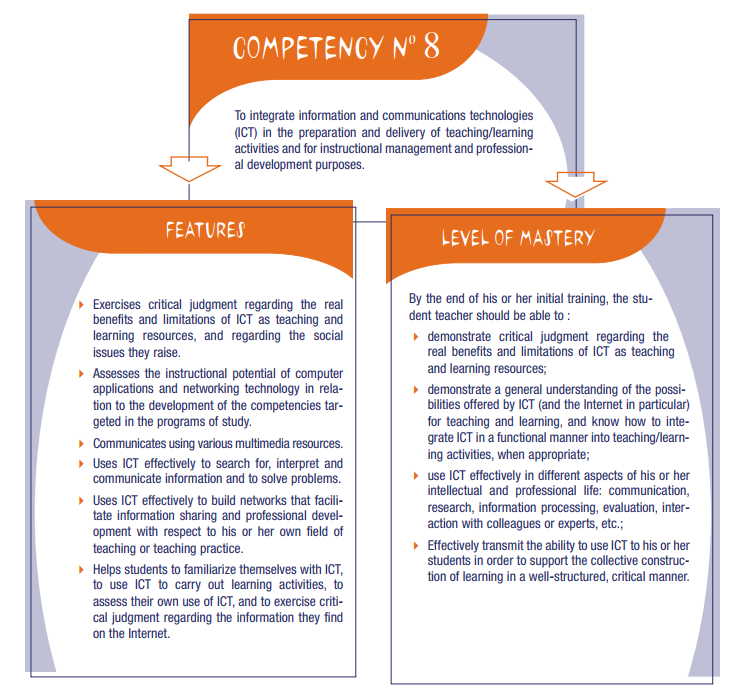
Summary [PDF] of competency 8 (p. 97).
This professional competency is one of 12 that are developed and targeted in the initial training of teachers for secondary school. These competencies are inter-related. The ICT course also requires the student to:
- Act as “professional heir, critic and interpreter of objects of knowledge or culture in the exercise of her or his functions”.
- Engage in individual and collective professional development.
I should mention that this course attracts a number of students, and with good reason, since the school boards often ask the candidates during job interviews about their experience with ICTs in teaching or will sometimes ask if have experience teaching using a specific tool that is already integrated within their schools. Screen capture of a blog created by future math teachers which is hosted on Profweb’s Web Space.
How did you go about structuring your course, and how is it structured?
Bruno: When the course began, I asked students to complete a self-evaluation that allowed them to rank themselves with regards to their level of ICT skills. Right from our second class, I inform them that they used the very same self-evaluation tool that is used in pedagogy for first-year college students. It is even used in certain secondary-level programs with the ICT profile. The stage is set! Even though the course context is that of the secondary-school level, students quickly ascertain that the development of ICT competencies for teaching and learning works across disciplines and is desirable at all levels of instruction in order to ensure that there is a certain coherence and progression.
For one of the more crucial activities in my course, my pedagogical scenario revolves around active learning pedagogy, most notably drawing on the use of project-based learning. I am also hedging my bets on using BYOD (Bring your own device) which allows them to experience authentic situations with genuine difficulties! I have fun planning the moments where I will encounter technical difficulties in front of the group, just to see how they will react.
Can you describe the student project?
Bruno: The term project can be divided into 4 main steps:
- Form a team of experts
I assign an initial collaborative task that uses the Google suite of tools. The 32 students get into groups of 4, which results in 8 teams. I call them the “teams of experts.” There’s nothing new about this strategy, but I want them to be conscious of their responsibilities towards their classmates. This past semester, each team chose from the following themes:- Emergence of active learning classroom environments
- iPad and tablets at school: uses, advantages and challenges
- Serious games in education
- Pedagogical interest of using interactive whiteboards
- Technology in service of learning to read and write
- BYOD and mobile technology
- Augmented reality and immersive digital environments
- Flipped classrooms and the use of learning management systems
They also have to co-author an essay on the subject they have chosen.
- Create a small professional community of sharing
The “experts” share the fruit of their reflection on Google Drive. They also have to deliver an oral presentation using ICTs to prepare and test. The classroom is more and more becoming an environment where there’s is a small community of sharing. A co-evaluation happens in real time: The students vote on the content and ask questions. This helps me to put an end to my label as a wall-to-wall “pro-tech” teacher. The position on technology that we end up adopting is a bit more nuanced and supported by models such as TPACK and SAMR in order to have a more systemic understanding of the different levels of integration. We are looking for the “added value” of using ICTs for our teaching practice. - Extend the walls of the classroom
This consists of adding a ‘networked’ dimension to this small community of sharing by offering a watch on various themes, communities of learning and different tools for curation. The students see different avenues for themselves to integrate and develop on a professional level. - Contribute to a collaborative environment in a network
The last step happens in cooperation with Profweb. Students have access to a hosted Web Space. They need to independently create a blog and summarize the content from their expert files, addressing their audience as if they were new teachers. The blog is inspired by the structure, writing style and publications from the Profweb and École branchée web sites. Here are a few screen captures that come from the thematic blogs of the course.
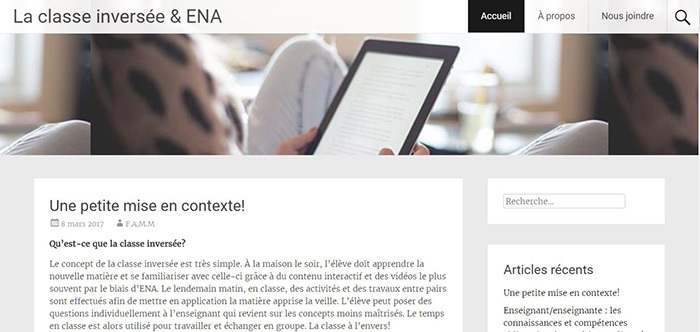
A glimpse of a blog on flipped classrooms and learning management systems (LMS).

A glimpse of a blog on the use of iPads and tablets in schools.
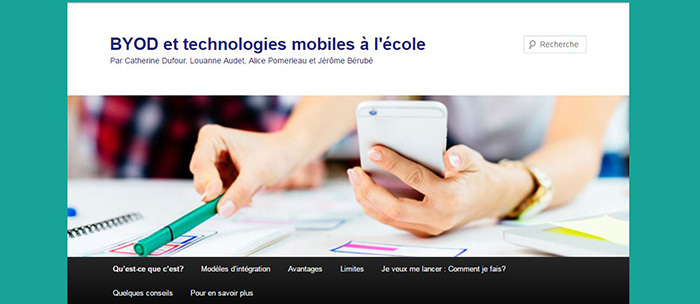
A glimpse of a blog on mobile devices and BYOD in schools.
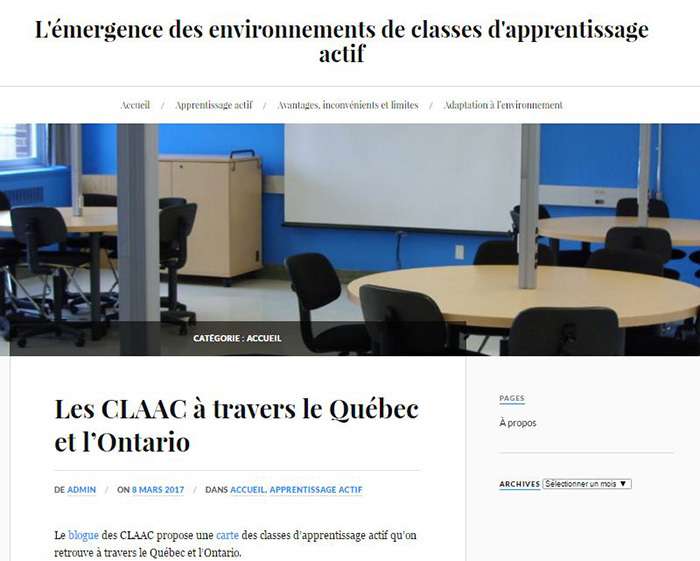
A glimpse of a blog on active learning classrooms.
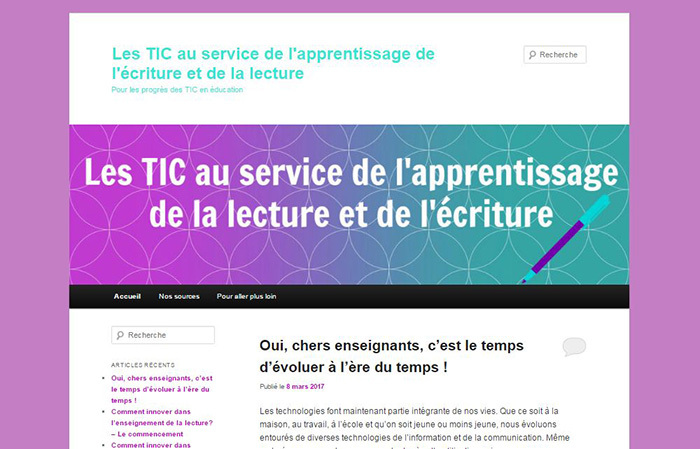
A glimpse of a blog on the use of ICTs in support of learning to read and write.
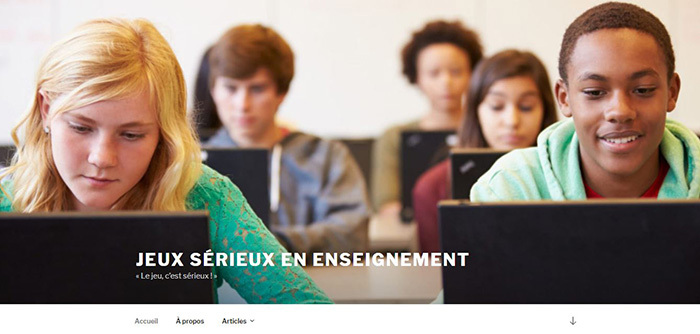
A glimpse of a blog on serious games in education.
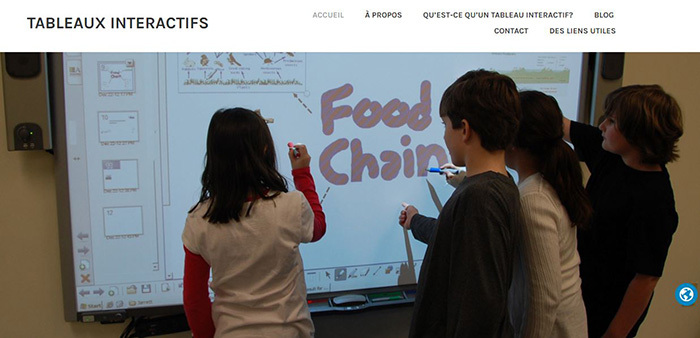
A glimpse of a blog on interactive whiteboards.
In conclusion, what would you like your students to remember about your approach?
Bruno: I am always happy to see that the students engage with the assigned projects and that the work they produce both collectively and individually is of a high-level of quality. Touch wood, but I have very few absent students in my classes, even in university! I use a collaborative approach and I create an environment in class that is similar to a science didactic course where students mobilize and find the meaning of their activities. They often tell me that they really feel that they are growing as teachers. I believe they are preoccupied with focusing their practice on the needs of the students. Many students – most notably those working in the science, technology and math disciplines – are surprised to discover that concrete strategies and clear pedagogical intentions lie behind the design of authentic learning situations.
I try to be the spark-plug that helps them to discover their power to act as a professional teacher.

